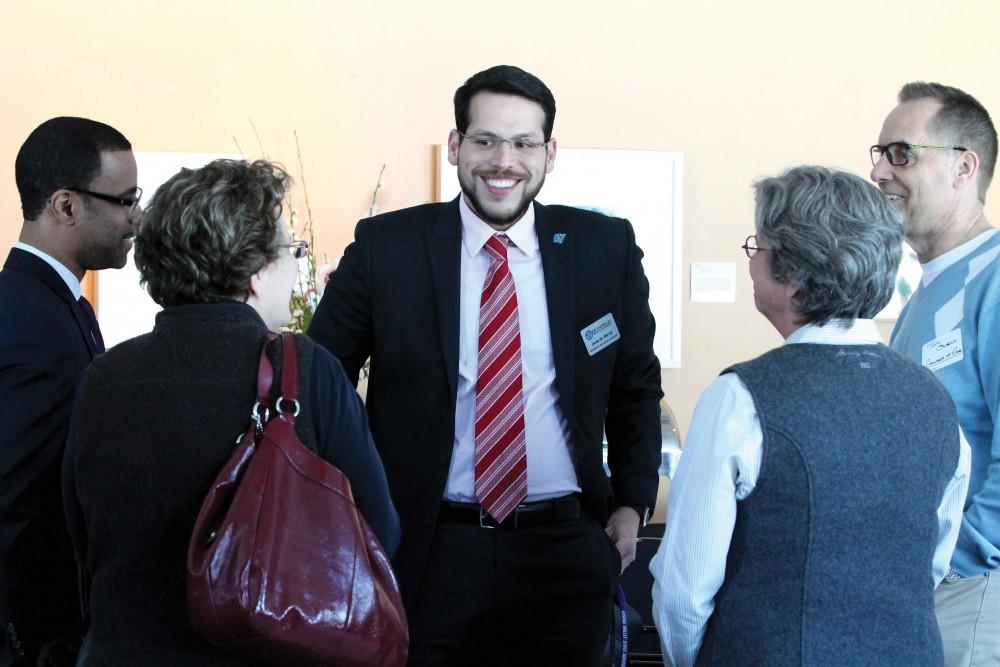42 percent of Laker community completes Campus Climate Survey

GVL / Emily Frye Vice President Jesse M. Bernal
Nov 29, 2015
The amount of overall people that participated was higher than both the national average for campus climate surveys and participation from GVSU’s last survey in 2011.
This year’s survey was the fifth one that GVSU has administered. There was a 42 percent overall participation rate this year compared to the 29 percent in 2011 and the national average of 27 percent.
The highest participating group was GVSU’s staff, with 61 percent partaking in the survey. This was slightly higher than the 57 percent who took the survey in 2011 and almost double the national average of 32 percent.
Faculty was the next highest group in terms of participation rates, beating the national average of 27 percent by more than two times; they had 57 percent participation. They also made a significant jump from GVSU’s 2011 survey in which 45 percent of faculty participated.
Students had the lowest participation rate with 40 percent of students taking the survey. However, that number is still higher than the national average of 23 percent and is still an increase from the last campus climate survey in 2011 in which student participation rate was 26 percent.
To increase numbers, Lynn McNamara Blue, vice president for enrollment development, sent out an email on Nov. 20, telling students that only 27 percent of students had taken it. She added the incentive of an extra $2,000 tuition grant if the participation rate reached 40 percent or above.
Jesse Bernal, vice president of the Division of Inclusion and Equity, said that although the initial numbers and participation rates are in, results will not be ready for several more months.
“We are using an external data analysis to support full transparency,” Bernal said. “Their final report won’t be available until February 2016.”
February is when the initial findings will be reported to GVSU. After the campus looks over those, they will identify early actions and initiatives and will convene focus groups.
A campus climate survey hopes to take experiences and effectiveness of communication of people and groups on campus and analyze them.
According the GVSU website on campus climate, “Campus climate research examines differences by identity groups or demographics on these key factors to discover important differences in experiences or perceptions.” It also states there are three factors in measuring a healthy climate: perceptions of campus, experiences on campus and perceptions of institutional action and commitment for equity and inclusion.
Many positive changes have happened on GVSU’s campus that were brought to the university’s attention through campus climate surveys. The Women’s Center was established, as was the LGBT Resource Center and an interfaith prayer space in the Kirkhof Center.
In addition to those things, other actions such as creating services for student veterans, having gender inclusive housing, creating gender neutral bathrooms, increasing training on issues of sexual violence, pay equity study and pay adjustments are direct results of campus climate results.

























